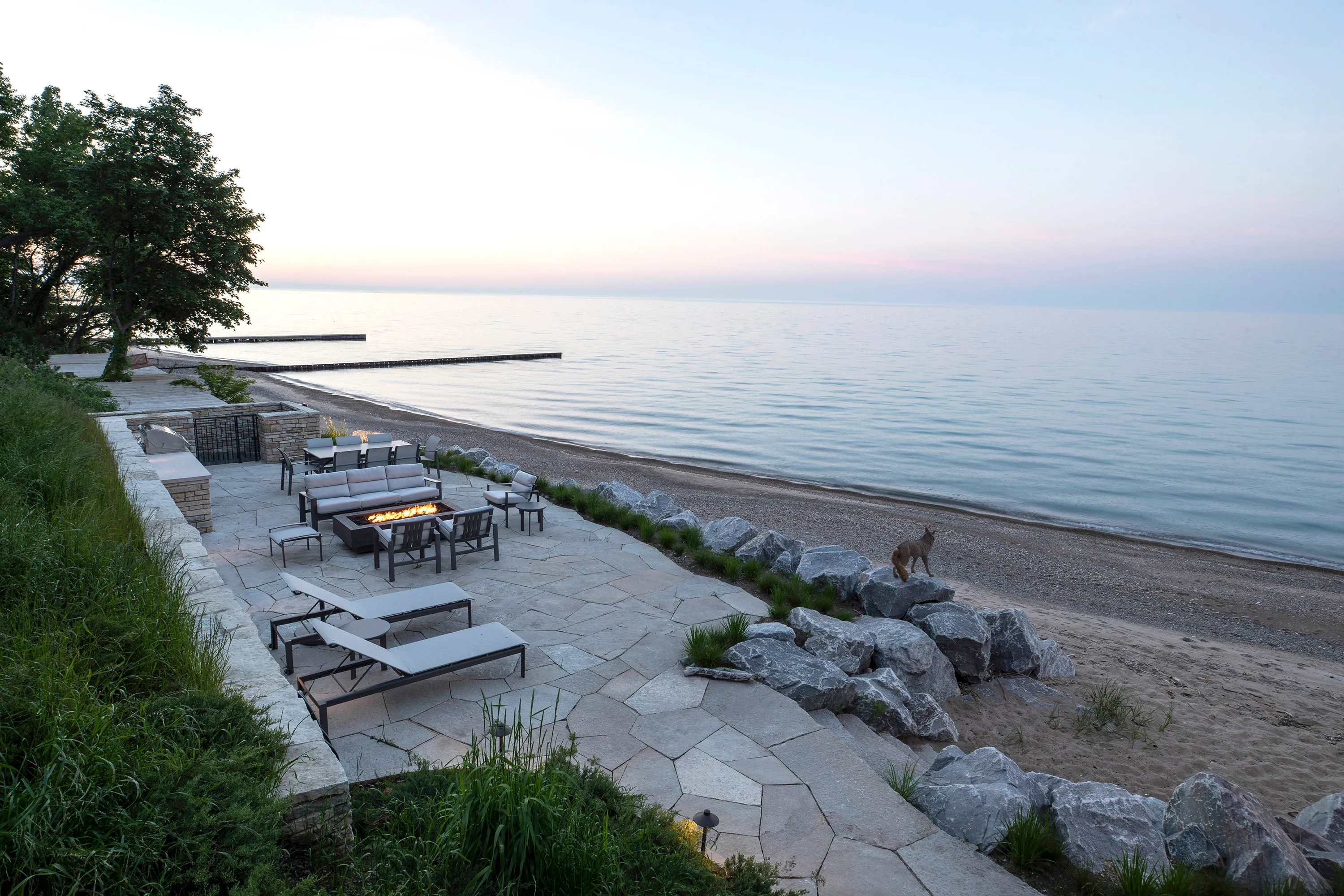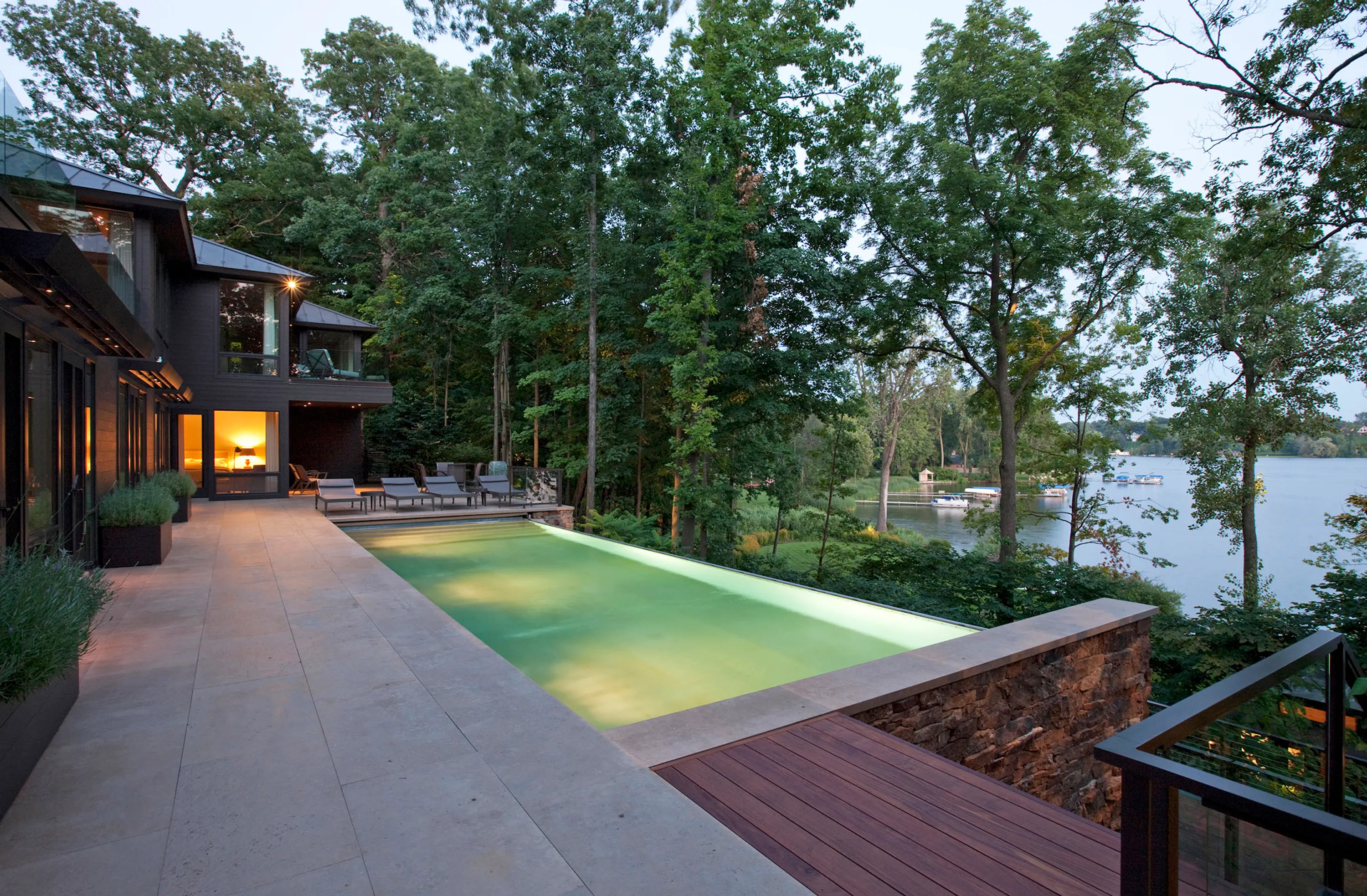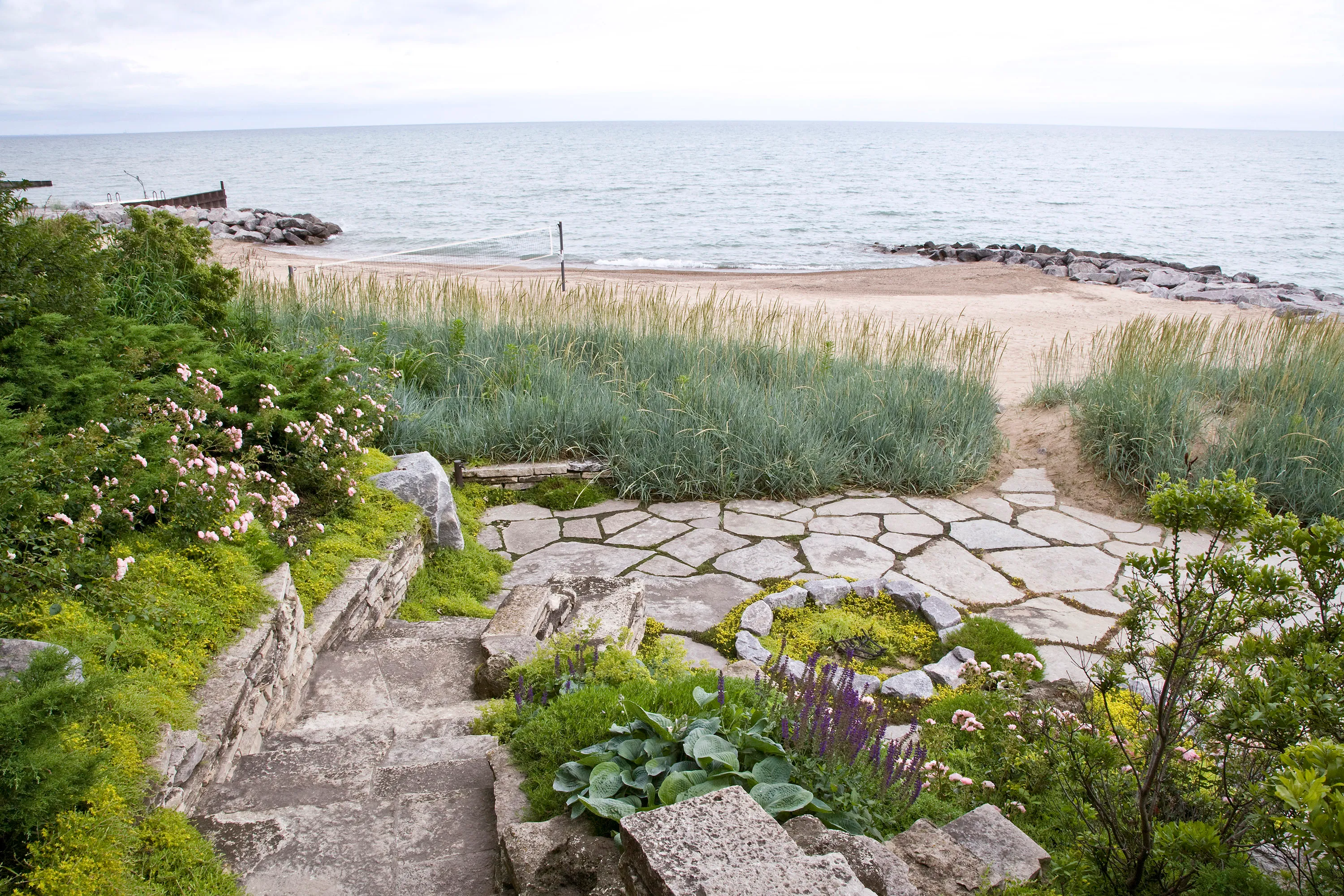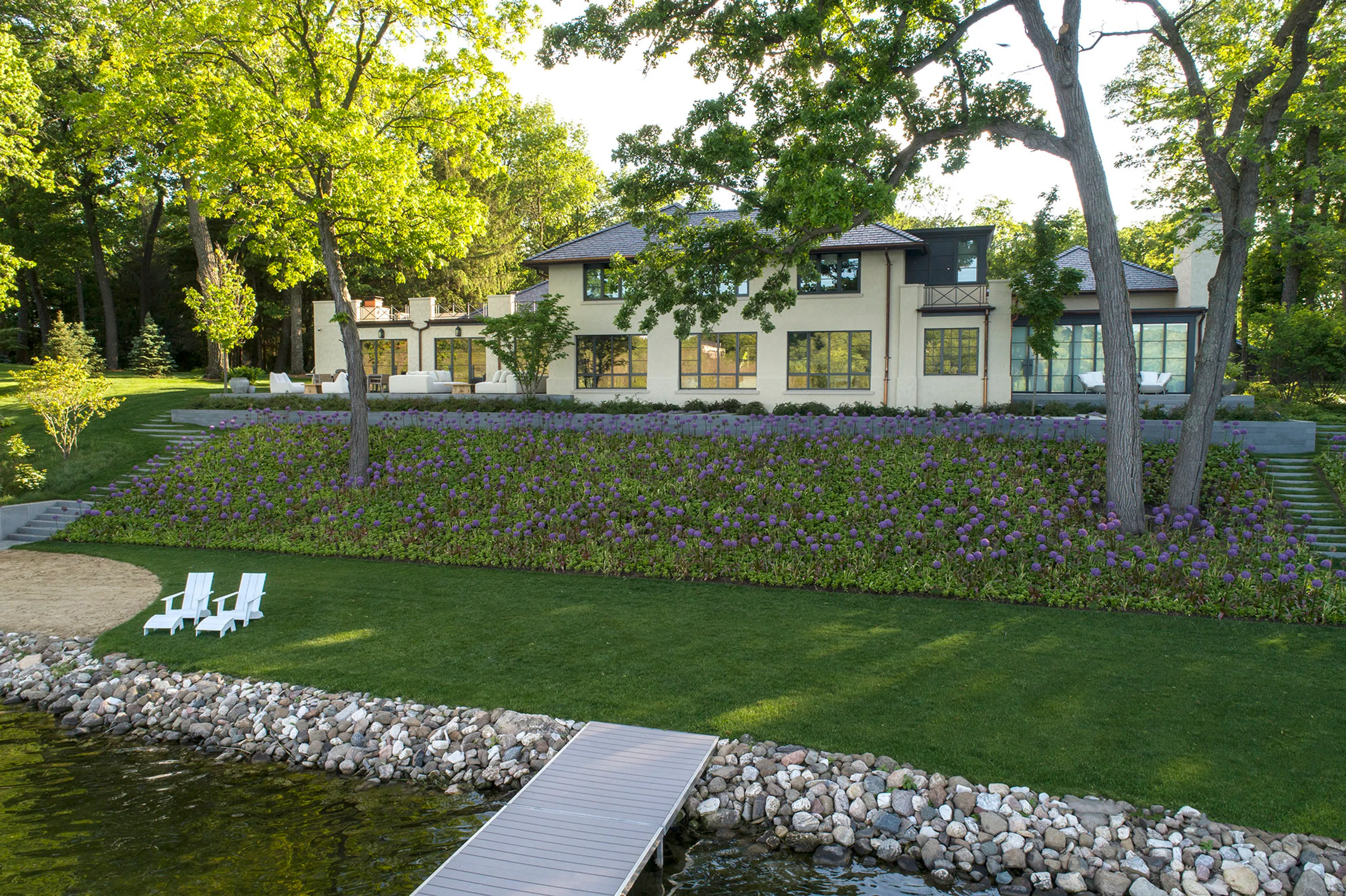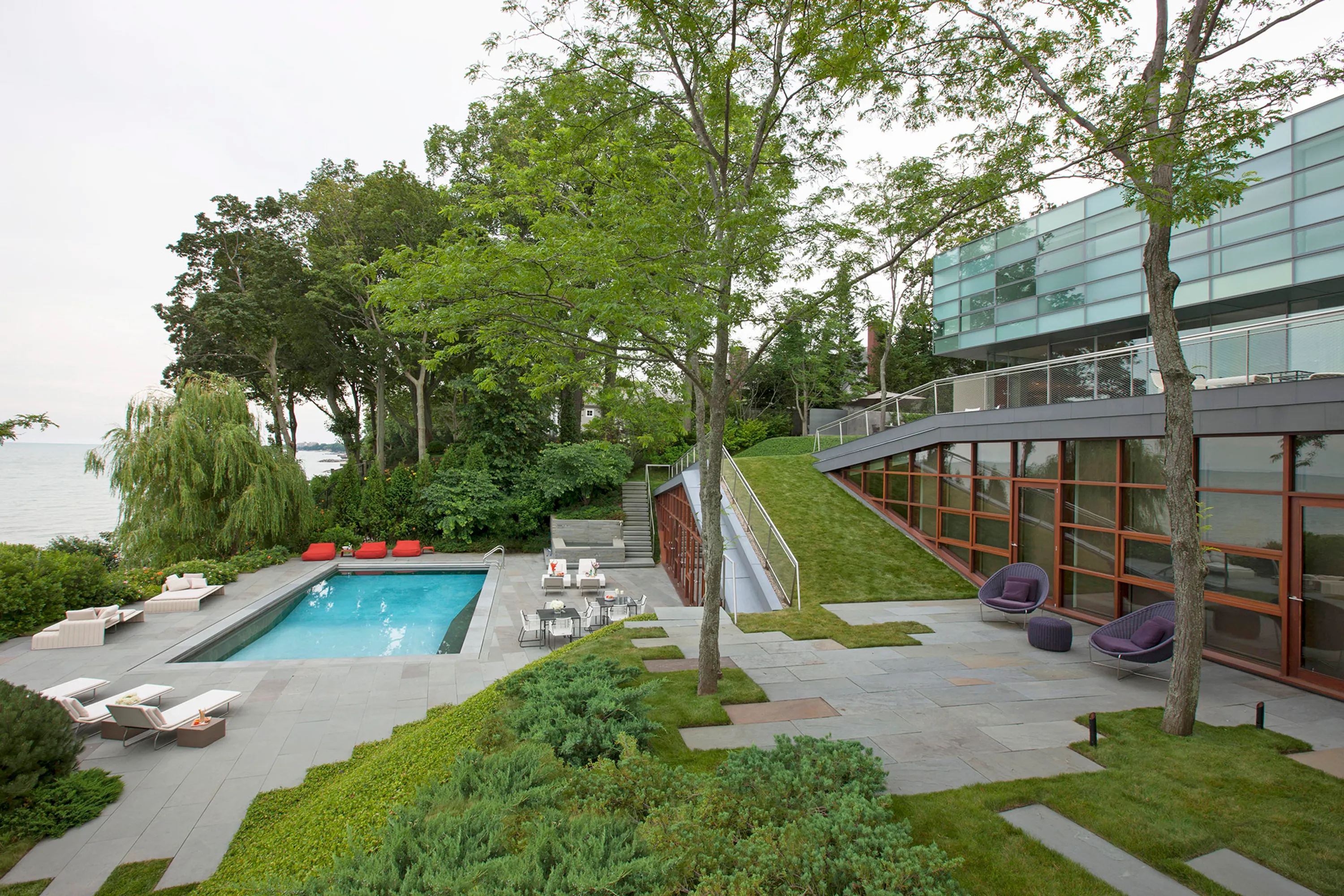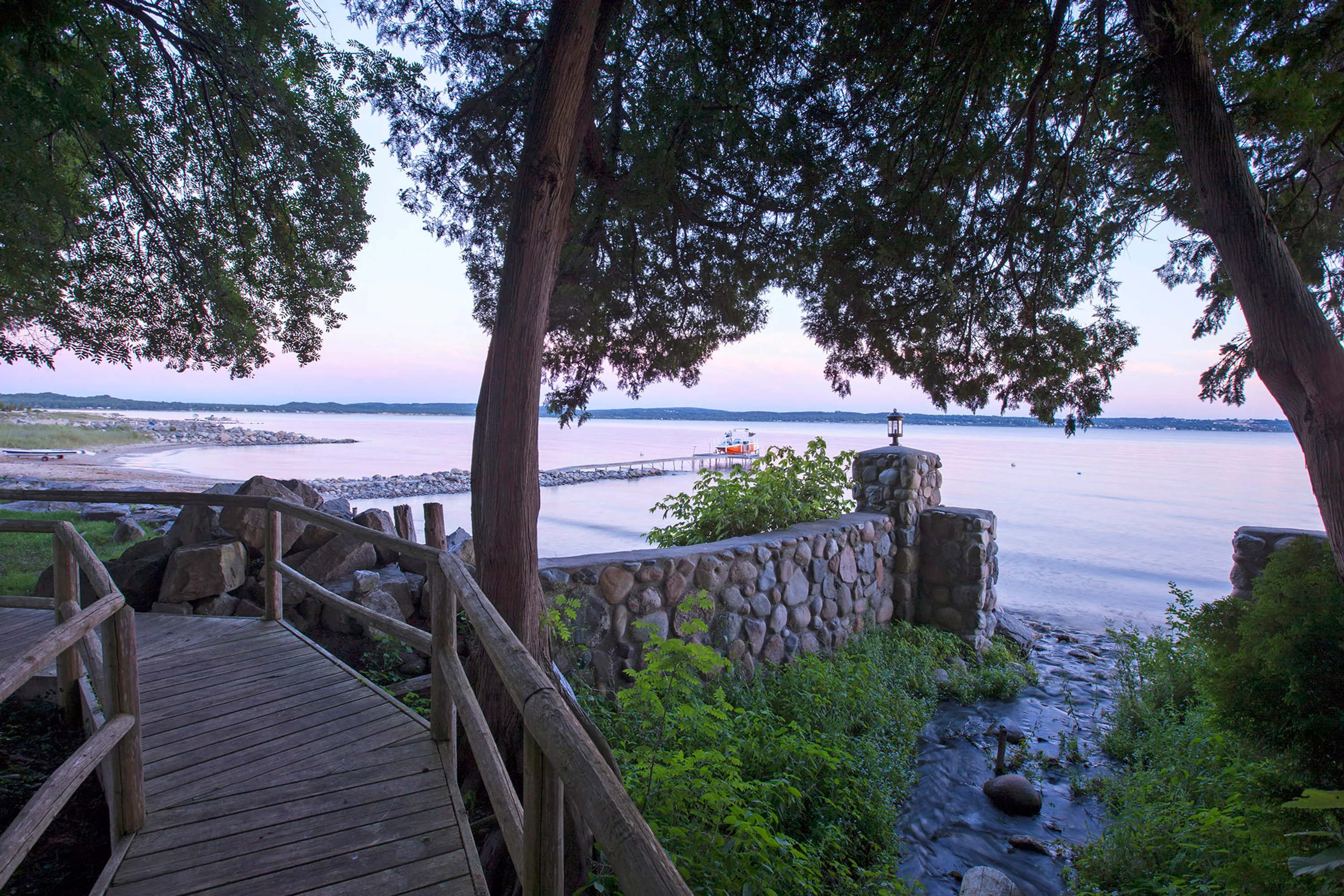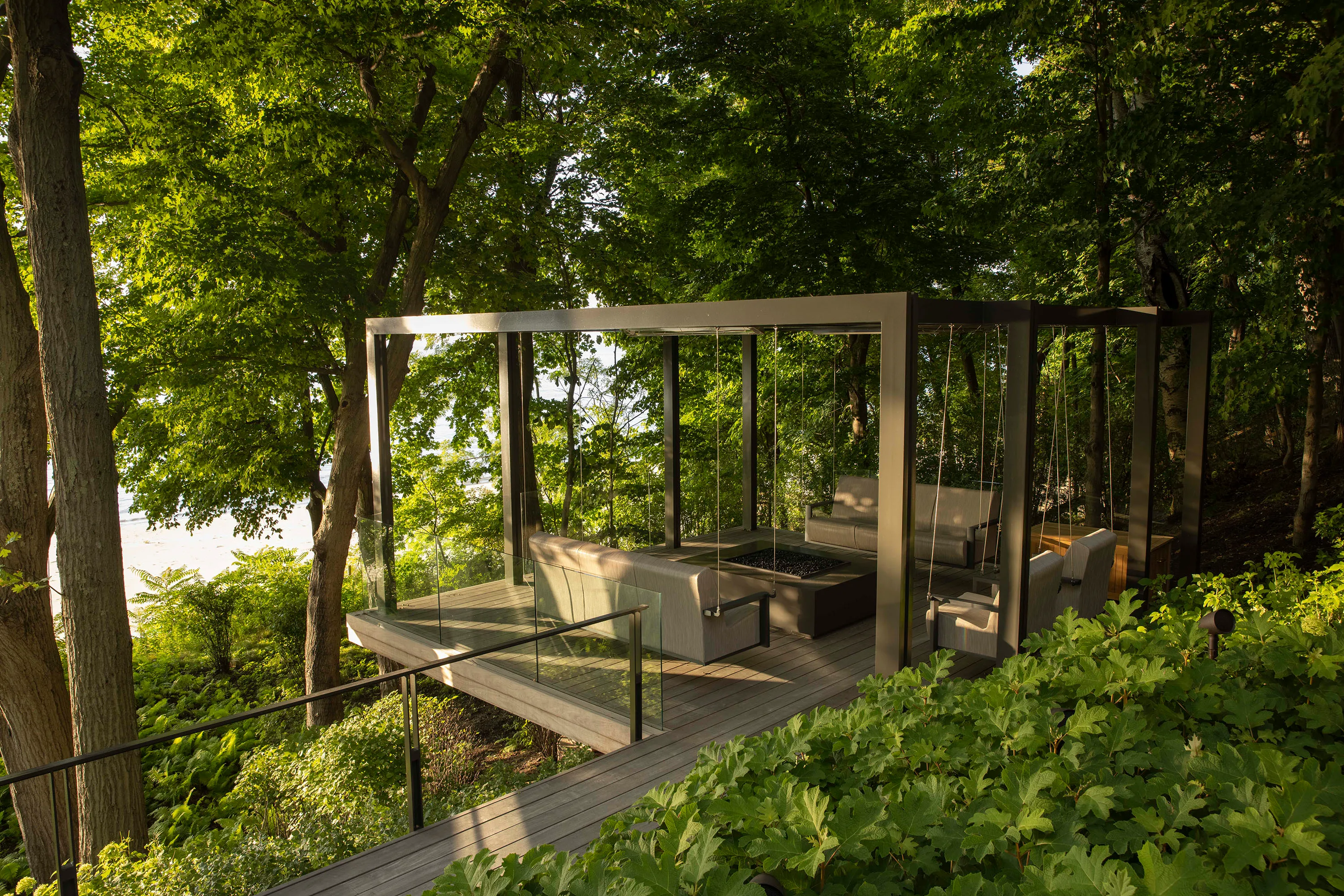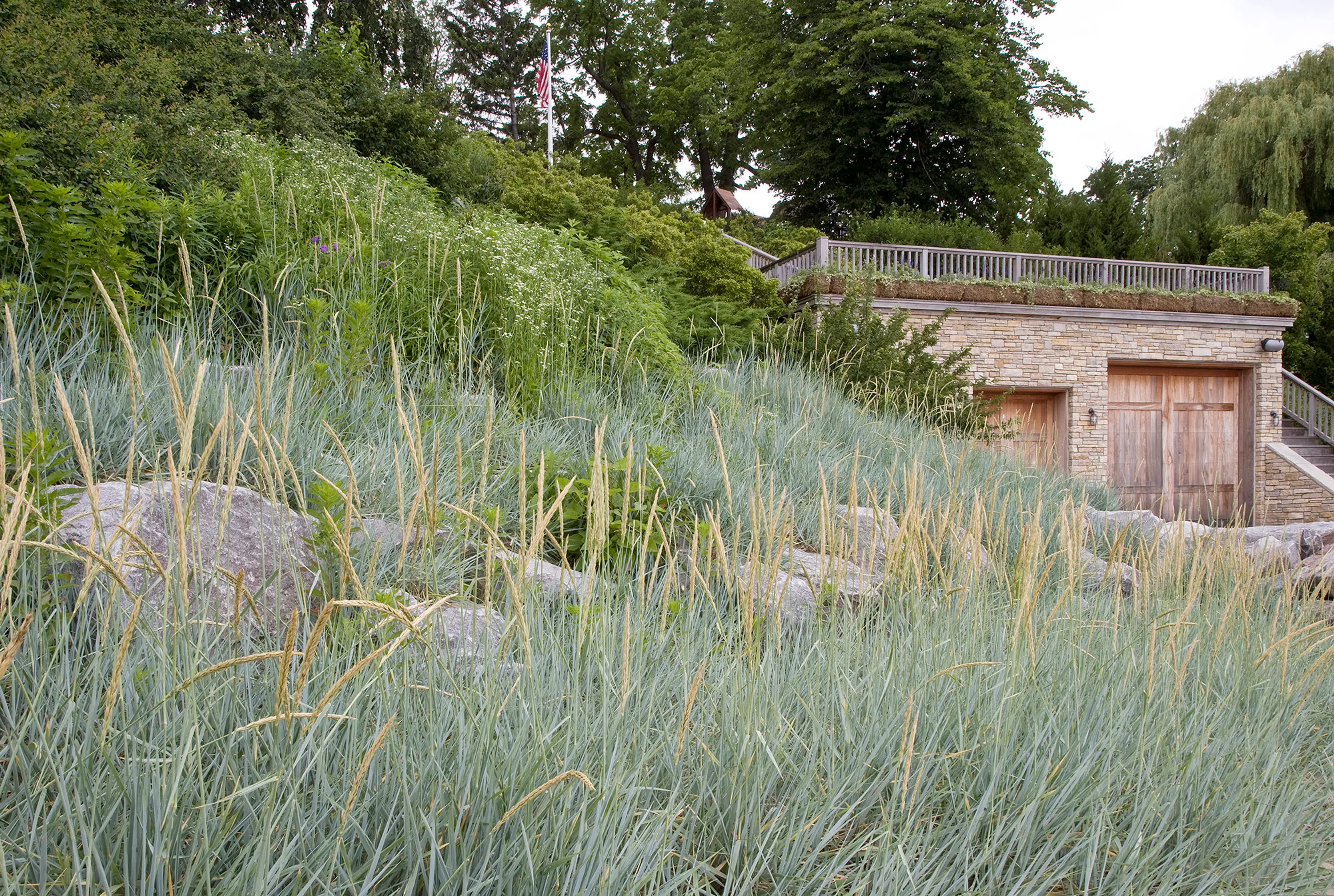Nothing epitomizes summer in the Midwest quite like slow days at the lake. Defined by the vast freshwater seas of the Great Lakes and thousands of smaller inland bodies of water scattered across its states, Midwesterners love to flock to the waterfront during the few months when temperatures rise and the sun stays out late.
As a Chicago-based firm with roots dating back 30+ years, the Midwest has been Hoerr Schaudt's foundation, where most of its work started and has since extended coast to coast across the country. In the Midwest, we regularly work in lakefront communities, including Chicago's North Shore, Northwest Michigan, Southwest Michigan, and Lake Geneva, Wisconsin.
To learn more about some of these residential projects, we sat down with three of our partners, John Evans, Nick Fobes, and Simon Prunty, to talk about Hoerr Schaudt's history with, connection to, and recommendations for landscape design in Midwestern lakefront communities.
